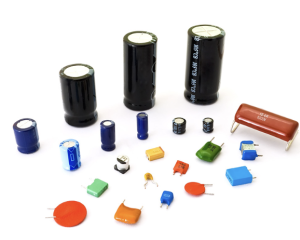Capacitors are fundamental components in nearly every electric appliance, playing a crucial role in energy storage, power conditioning, signal filtering, and motor starting. From small household gadgets like smartphones to large appliances like refrigerators and air conditioners, capacitors ensure smooth and efficient operation. This article explores the types of capacitors, their functions, applications in electric appliances, common failures, and advancements in capacitor technology.
1. What is a Capacitor?
A capacitor is a passive electronic component that stores and releases electrical energy in a circuit. It consists of two conductive plates separated by an insulating material called a dielectric. The ability to store charge is measured in Farads (F), though most capacitors operate in microfarads (µF), nanofarads (nF), or picofarads (pF).
Key Properties of Capacitors:
- Capacitance (C): The amount of charge a capacitor can store per unit voltage.
- Voltage Rating: The maximum voltage a capacitor can handle before failing.
- Equivalent Series Resistance (ESR): Internal resistance affecting performance.
- Polarity: Some capacitors (like electrolytics) are polarized and must be connected correctly.
2. Types of Capacitors Used in Electric Appliances
Different appliances require different types of capacitors based on voltage, capacitance, and application.
A. Ceramic Capacitors
- Construction: Made of ceramic dielectric material.
- Characteristics: Small size, non-polarized, high-frequency operation.
- Applications: Used in smartphones, computers, and RF circuits for noise filtering.
B. Electrolytic Capacitors
- Aluminum Electrolytic: High capacitance, used in power supplies (e.g., washing machines).
- Tantalum Electrolytic: More stable, used in medical devices and laptops.
C. Film Capacitors
- Polyester (Mylar) & Polypropylene: High reliability, used in motor run applications (AC units, fans).
- Metalized Film: Self-healing property, used in power electronics.
D. Supercapacitors (Ultracapacitors)
- High energy storage: Used in regenerative braking systems (e.g., some modern appliances).
E. Variable Capacitors
- Adjustable capacitance: Used in tuning circuits (older radios).
3. Functions of Capacitors in Electric Appliances
Capacitors perform several critical roles:
A. Energy Storage & Power Smoothing
- Example: In power supplies, capacitors stabilize voltage by storing and releasing charge to prevent fluctuations.
B. Motor Start & Run
- Single-Phase Motors: Capacitors provide the phase shift needed to start motors in washing machines, refrigerators, and air conditioners.
- Start Capacitor: Gives initial torque (short-term use).
- Run Capacitor: Maintains efficiency during operation.
C. Noise Filtering & Signal Coupling
- Example: In audio systems, capacitors block DC while allowing AC signals to pass.
D. Power Factor Correction (PFC)
- Industrial Appliances: Capacitors improve efficiency by reducing reactive power in inductive loads.
4. Common Capacitor Failures in Appliances
Capacitors degrade over time due to:
- Heat Exposure: Electrolytic capacitors dry out, reducing capacitance.
- Overvoltage: Can cause dielectric breakdown.
- Aging: ESR increases, leading to poor performance.
- Polarity Reversal: Explosions in electrolytic capacitors.
Symptoms of a Faulty Capacitor:
- Bulging/Leaking: Visible damage in electrolytic capacitors.
- Appliance Not Starting: Common in motor-start capacitors.
- Humming Noise: Indicates a failing run capacitor in motors.
5. Advancements in Capacitor Technology
Modern appliances demand more efficient and durable capacitors:
- Solid-State Capacitors: Longer lifespan, used in high-end electronics.
- Graphene Supercapacitors: Faster charging, higher energy density (emerging tech).
- Smart Capacitors: Self-monitoring for predictive maintenance.
6. Conclusion
Capacitors are indispensable in electric appliances, ensuring energy efficiency, motor functionality, and signal integrity. Understanding their types, functions, and failure modes helps in diagnosing and maintaining appliances. With advancements in materials and design, capacitors will continue to evolve, supporting next-generation smart and energy-efficient devices.
Final Thought:
Next time your refrigerator hums or your air conditioner starts smoothly, remember—the tiny capacitor inside is working hard to make it happen!
- Everything You Need To Know About Limit Switch - May 21, 2025
- Everthing You Should Know About Rheostat - May 20, 2025
- Everything You Need To Know About Reversing Contactor - May 19, 2025







